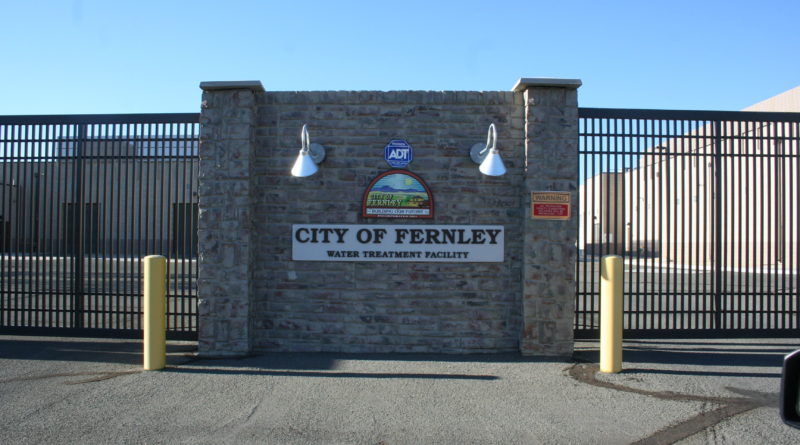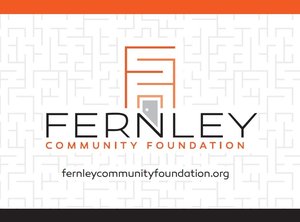Canal lining proposal has city working on water supply alternatives
Robert Perea, The Fernley Reporter
While it continues to fight a proposal by the U.S. Bureau of Reclamation to line the Truckee Canal that the City of Fernley says would deplete its groundwater supply, the city is working on other ways to feed its municipal water supply.
City Manager Daphne Hooper and attorney David Rigdon of the Taggart & Taggart Law Firm, which represents the city on water issues, held a Zoom conference April 28 to update residents on the BOR proposal and how it would affect residents, the public comment period and what the city is trying to do to make sure it will have enough water.
The biggest issue, Rigdon said, is that lining the canal would eliminate recharge of the groundwater beneath Fernley, which would dry up domestic wells and decrease the amount of water the city could pump from underground.
City’s options
The city has 10,000 acre feet per year of Truckee River water rights that it doesn’t currently use for municipal service. In 2017, the city reached an agreement with the BOR to store that 10,000 acre feet per year in Stampede and Boca reservoirs. It uses some of that water for other purposes and put a leasing program in place while it didn’t have the infrastructure to use it.
The city’s water treatment plant is currently only used to treat groundwater. The water treatment plant was built to comply with federal requirements to remove arsenic from drinking water.
Construction of the water treatment plant was completed in 2009, and at the time the city said it could be expanded in the future to treat surface water. While groundwater is treated to remove minerals, surface water is treated to remove bacteria, and the city estimated it would cost several million dollars to add the ability to treat surface water.
But a reassessment of the water treatment plant a couple of years ago determined that it would be less costly than the city had originally thought. Since that time, the city has been setting aside money for a pipeline project to transport water from the canal to the water treatment plant.
Design for the pipeline has been completed and specifications have been submitted to the Bureau of Reclamation for approval. The council has budgeted $3.5 million in both the 2020-21 and 2021-22 fiscal years to pay for the project.
“Once the infrastructure is in place, this will diversify the system so we will have access,” Hooper said. “The operational plan will determine when and how much is used within the system.”
In addition, the city has a permit to drill a well and pump about 2,100 acre feet per year from the Brady’s Hot Springs area. Drilling a well and installing a pipeline to bring the water the 20 or so miles into the city water system would cost millions of dollars, Rigdon said. The city doesn’t yet have funding or a design for that project but does have the permits from the state engineer.
Domestic wells
Although the public comment period on the BOR’s draft Environmental Impact Statement expired April 20, and a district court judge denied Fernley’s petition to extend public comment because of the COVID-19 pandemic, Rigdon said one result of the city’s lawsuit was that the Bureau of Reclamation said it would respond to comments it receives before the end of May.
Rigdon encouraged any residents who haven’t yet submitted comments to do so, and to make their comments as individually specific as possible. The BOR is required to respond individually to every public comment it receives. Those responses, however, won’t be sent to the commenters, but will be included in the final EIS, which Rigdon said could be done in six to eight months.
There are about 450 domestic wells throughout Fernley, and Rigdon said models show that if the canal is lined, the shallowest of those would dry up within the first year. He said those same models also show that 71 percent of the 450 wells would be dry within 40 years.
“Seventy-one percent of domestic wells going dry, that would be a health and safety nightmare for the city,” Rigdon said.
If a well goes dry, Rigdon said an owner’s three alternatives would be to connect to city water, deepen the well or build a tank and have water trucked to their property. But some of those wells are miles from city water lines, so connecting to city water lines would not be viable, he said.
Friday, Hooper sent residents who attended the April 28 Zoom meeting a list of guidelines for submitting comments to the BOR. The city has also scheduled a follow-up Zoom meeting at 10 a.m. Friday, May 15 where Hooper and Rigdon will answer residents’ questions.
Mitigation
The Bureau of Reclamation acknowledged in its draft EIS that elimination of recharge of groundwater is an unavoidable consequence of lining the canal. BOR proposed four mitigation measures the city and domestic well owners could take.
For owners of domestic wells that fail, the BOR proposes the city extend its water system to those properties.
To make up for its loss of groundwater, the BOR proposed that the city use its existing surface water rights, purchase other water rights or require developers to dedicate water rights to support their developments.
But Rigdon said there are very few water rights available for sale. The city already requires developers to dedicate water rights for their projects, but that only provides water for those developments and wouldn’t replace lost water, he said.
All of the proposed mitigation measures would require residents and the city to pay for them.
“They don’t believe we have any right to the recharge water, including that they don’t believe the domestic well owners have any right to the recharge water, and they don’t believe they have any responsibility no matter what their project does, to fix the problems that they’re causing,” Rigdon said.
However, Rigdon argues that precedent says the city – and residents – do have the right to use the water.
The Truckee Canal was built in 1902 as part of the Newlands Project, which was used to entice settlers to the Lahontan Valley, which includes Fernley, for agricultural purposes.
“The Bureau built the canal in 1902 to affirmatively encourage people to live in these projects, and it was because of the canal that Fernley was created,” Rigdon said. “We’ve relied on this recharge for almost 120 years. It was the specific purpose of the project to do this.”
What: Zoom webinar When: May 15, 2020 10 a.m. Pacific Time (US and Canada) Topic: Truckee Canal Follow-Up Meeting Click the link below to join the webinar: https://us02web.zoom.us/j/89876518435?pwd=WUhQOWZXbEVPSk5lUjJad29lM1M0Zz09 Password: 206129




Has City staff completely checked if there are any government grants available to pay for any of these projects.
Pingback: Bureau of Reclamation releases final EIS on Truckee Canal project